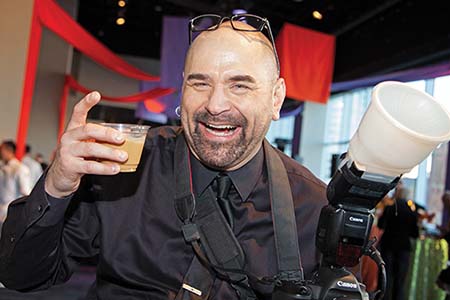
Jim Norrena became a production photographer out of necessity, and in the process invented an integral role for himself in Northern California theatre. Working with such new-play creators such as Wily West Productions, Playwrights’ Center of San Francisco, and Central Works, Norrena deftly documents and illustrates onstage dynamics, helping productions take their ideas to the broader world.
It all started in 2012, while Norrena was serving on the board of the nonprofit Playwrights’ Center. He volunteered to take photos for the organization’s annual short-play festival “Sheherezade,” simply as a cost-saving measure. Festival participants took note of his work, though, and soon many other performing arts organizations were asking him to shoot for them. “It’s a small community, but tightly knit,” Norrena says. “Word of mouth just took over.”
Playwright Patricia Milton says that Norrena’s work manages to “communicate the excitement and immediacy of live theatre under a variety of difficult conditions. His production photography is the best I’ve seen.”
While he is also called on to shoot events—a Magic Theatre gala, an SFMOMA fundraiser—capturing mercurial moments created by actors onstage is his passion. Working under tight deadlines against all kinds of challenges and constraints, he has come to understand a bit of the theatre artists’ process.
“You have to do the best job you can as quickly as you can, and it may not be the work that you like the most,” Norrena says. “You learn to let go—people just need to see a visual of the production to get an idea, a hint of what that production offers, and more likely than not you’re going to deliver something the audience needs.”
The 50-year-old Oakland native says he finds the Bay Area one of the most supportive areas in the country for new-play development, which matters to him, as he’s also an aspiring playwright. “Lots and lots of theatres are committed to developing new work—it’s an exciting time to be in theatre here,” Norrena says.
As much photography as he’s done, Norrena now has some insight into what makes a good photo: a connection among characters.
“If you can capture that emotion, and hopefully if that energy is ambiguous, it’s even more intriguing,” Norrena says. “If you can’t quite discern if it’s anger or passion, it makes for an exciting image.”
Of course, he’s aware that capturing this sense of excitement is in the service of a very particular goal. “Ultimately it’s about getting people in seats,” says Norrena. “I never forget that aspect of it.”

